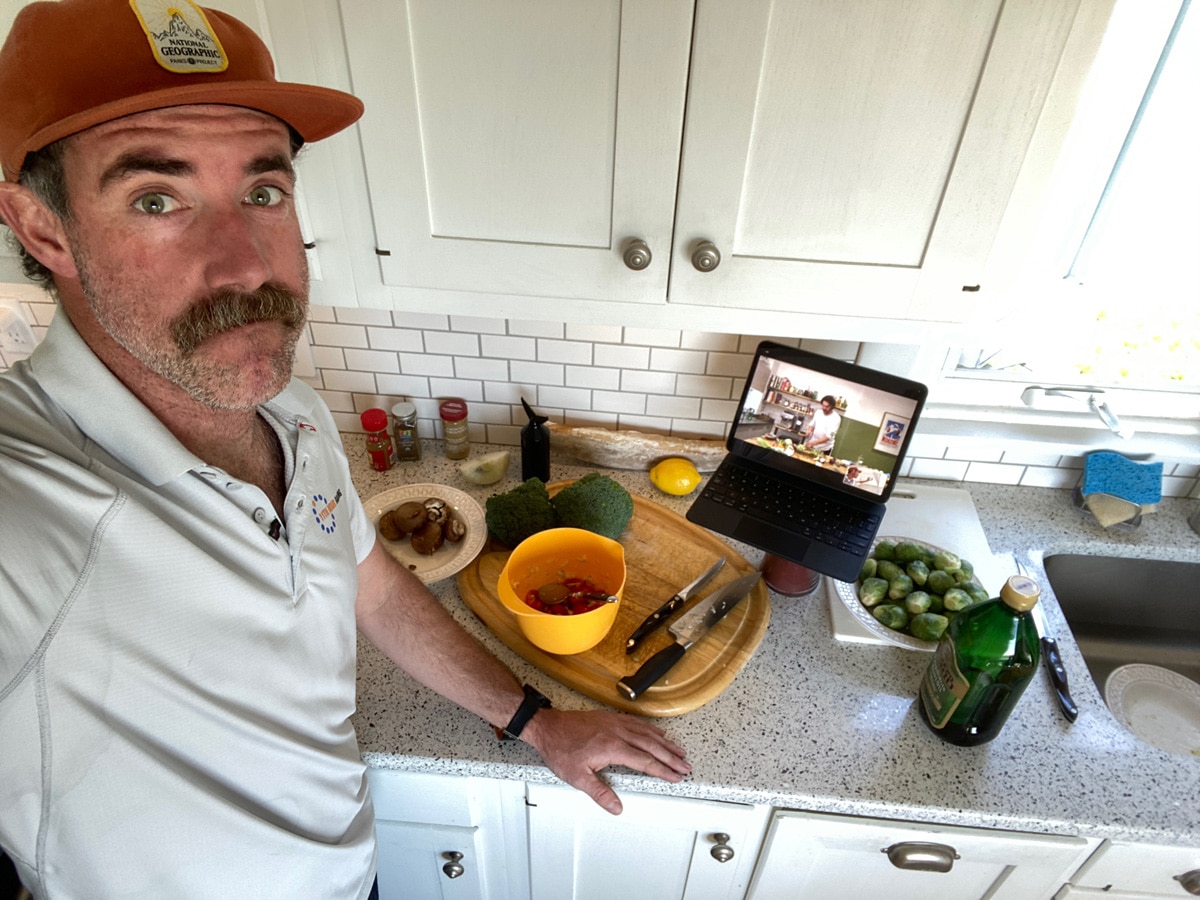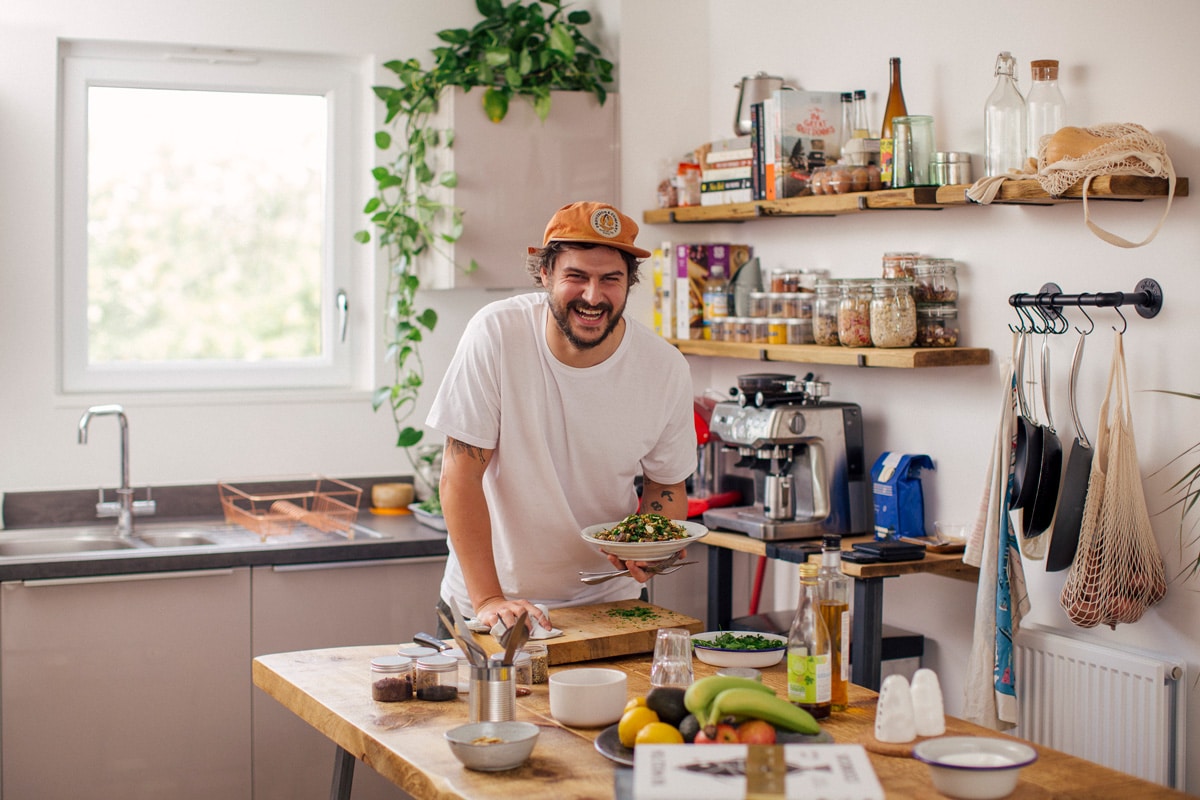5 Ways to Stop Food Waste
Did you know that US households discard 30-40% of all their food? That’s a whole lot of wastage – and not just in food, but wasted dollars, too!
To mark Zero Food Waste day on 28 April, we challenged our Team to a cook off.
Our Sustainability Officer, Amy Munro, drafted a UK-based Zero Food Waste supremo, Martyn Odell (AKA Lagom Chef) to run the ‘virtual’ show.
There may have been a few sliced fingers along the way but by the end of the cook-along session, we all had a nutritious, delicious vegan meal to enjoy, and absolutely no wastage in our bins. A win-win all round.

We didn’t just spend our time cooking and eating though – we learned a lot too. Check out our top 5 tips for reducing household food waste that we picked up from Lagom Chef:
- It might sound obvious, but use the food you buy.
The food that we bring into our house is our responsibility. As Martyn said during our cooking session: “Let’s not live like greedy pigs!” The simplest way to tackle food waste is to ensure that we use what we already have before we go out and buy more.
- When cooking with vegetables, use the whole thing.
Still throwing away those onion peels? You can actually dry them out, grind them down and turn them into onion powder. Wondering what to do with your cauliflower leaves? Sautée them in some butter, garlic and lemon. YUM. Roasting broccoli florets? Think twice before throwing out the stem, you can cut those into matchsticks for a surprisingly sweet raw snack.
- Get prepping!
A big bunch of spinach, kale or greens can sometimes seem a bit intimidating – they take up a lot of space and, after a few days, you’ve probably found yourself considering dropping it all in the bin to free up some room in your fridge. A great way to solve this problem is to prep them for longer-last storage. Blanch those greens! Cook them halfway then plunge them into ice cold water. They’ll hold in the fridge for days on end, taking up a fraction of the space. Heat them up in a pan when you want to eat them – easy!
- Ferment your aging fruit and turn it into Kombucha.
All you need is some tea, your leftover fruit and a SCOBY (symbiotic culture of bacteria and yeast – sounds technical but it’s all pretty simple, natural and good for you!) The bacteria and yeast eat the sugar from the tea, transforming it into a naturally carbonated healthy drink. You can get started with Martyn’s Phase 1 – Kombucha tutorial here.
- Keep up the composting.
Okay, so we know you might not always be able to close the loop every now and then with food waste by using up every single part of the food you cook with. For those little bits left over, ensure you drop them into your compost bin rather than your household waste. The rich soil you’re left with at the end of the process is liquid gold for plants, helping you restock your fridge with all-natural healthy fruits and veggies.
As a team, we’ve challenged ourselves to track our food waste and consciously strive to reduce it. You can get in on it, too!
Some useful resources for you:
- Listen: The Rubbish Podcast by Lagom Chef
- Read: Silo; The Zero Waste Footprint by Doug McMaster
- Sign Up: Hubbub’s Community Fridge (UK)




